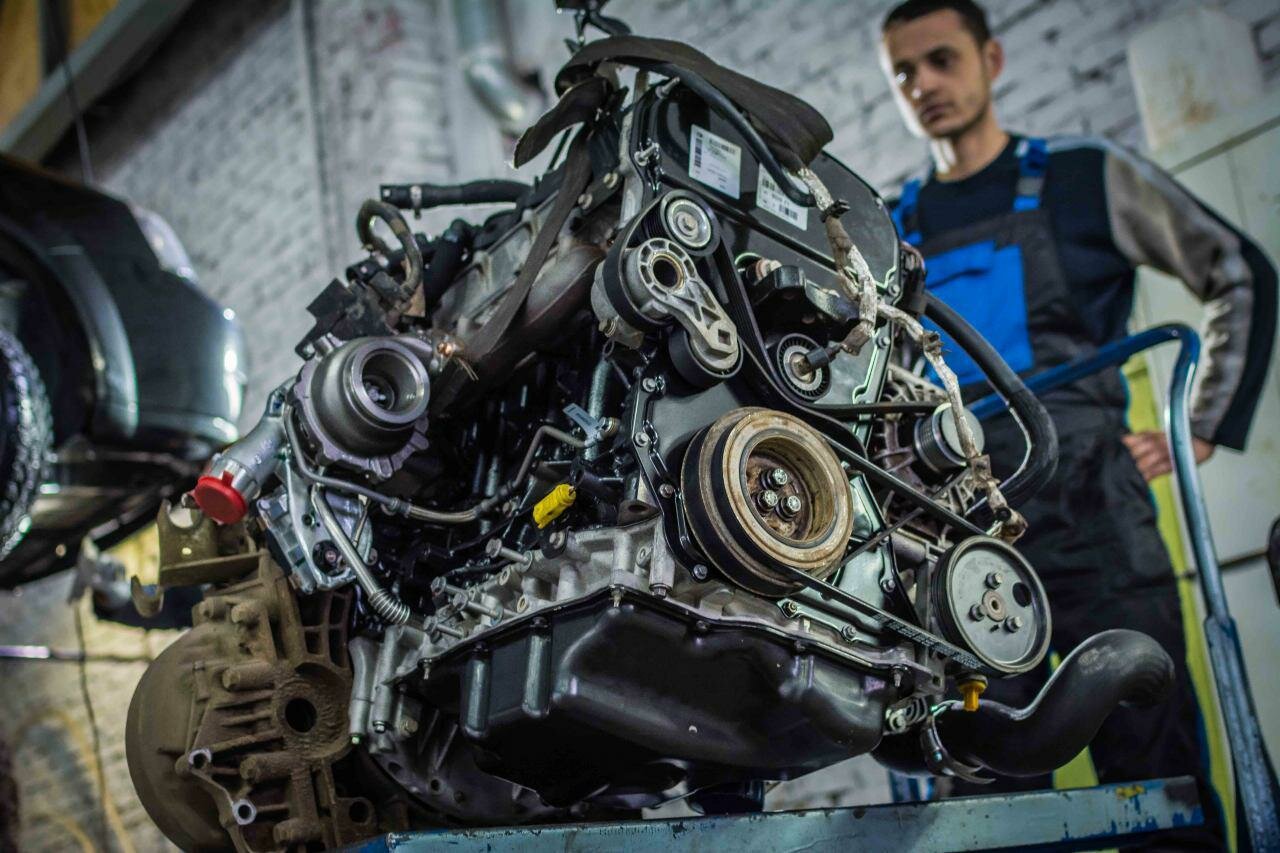The Drive-E engine from Volvo is designed to deliver efficiency and performance, but like any engine, it can run into issues. Owners of vehicles equipped with this engine may experience a range of symptoms that indicate something isn’t quite right. Understanding these symptoms is crucial for any motorist, as they can help identify potential problems before they escalate into serious repairs.
When it comes to engine performance, the Drive-E engine is generally well-regarded, but it’s not immune to the typical wear and tear that comes with regular use. Symptoms can vary widely, from minor inconveniences to more significant concerns that could affect drivability.
Common Symptoms of Engine Issues
Performance Problems
One of the first signs that something might be wrong with the Drive-E engine is a noticeable drop in performance. This can manifest in several ways:
- Reduced Acceleration: If your car feels sluggish when you press the gas pedal, it may indicate an underlying issue.
- Unusual Noises: Knocking, ticking, or grinding noises can be a red flag that something is amiss.
- Engine Stalling: If the engine cuts out unexpectedly, this is a serious symptom that should not be ignored.
Fuel Efficiency Issues
Another area where problems can arise is fuel efficiency. The Drive-E engine is designed to be economical, so if you notice a sudden increase in fuel consumption, it could point to several issues:
- Check Engine Light: This warning light can indicate a variety of problems, including fuel system issues.
- Frequent Refueling: If you find yourself at the pump more often than usual, it’s time to investigate.
Engine Warning Lights
The dashboard is your first line of defense when it comes to identifying engine problems. Pay attention to warning lights, as they can provide critical information:
- Check Engine Light: This is the most common warning light and can indicate anything from a loose gas cap to more serious engine issues.
- Oil Pressure Light: If this light comes on, it could mean that your engine isn’t getting enough oil, which can lead to severe damage.
Physical Symptoms
Sometimes, the symptoms of engine problems can be more physical and noticeable:
Leaks and Smells
If you notice any fluid leaks under your car or unusual smells while driving, take note:
- Oil Leaks: Dark spots on the ground where you park can indicate oil leaks, which can lead to engine wear.
- Coolant Leaks: A sweet smell or visible coolant under the car can indicate a leak, which can lead to overheating.
Vibrations and Rough Idling
If your car shakes or vibrates when idling, or if the engine sounds rough, these can be signs of problems:
- Rough Idle: If the engine feels like it’s shaking or struggling to stay on, it may indicate issues with the fuel injectors or spark plugs.
- Excessive Vibration: This can be a sign of misfiring cylinders or other internal issues.
Understanding these symptoms can help you stay ahead of potential problems with your Drive-E engine. If you experience any of these issues, it’s wise to consult with a qualified mechanic to diagnose and address the problems before they worsen.
Understanding Engine Problems in the Drive-E Series
The Drive-E engine series from Volvo has garnered attention for its efficiency and performance. However, it’s not without its share of problems. Various factors can lead to engine issues, and understanding these causes can help you take proactive measures.
Common Causes of Engine Problems
There are several reasons why you might experience issues with your Drive-E engine. Here’s a breakdown of some of the most common culprits:
| Cause | Description |
|---|---|
| Poor Fuel Quality | Using low-quality or contaminated fuel can lead to engine knocking and performance issues. |
| Faulty Sensors | Malfunctioning sensors, such as the oxygen sensor or mass airflow sensor, can send incorrect data to the engine control unit (ECU), affecting performance. |
| Oil Issues | Low oil levels or dirty oil can lead to inadequate lubrication, causing engine wear and potential failure. |
| Cooling System Failures | Overheating due to a faulty thermostat or a leak in the cooling system can cause significant engine damage. |
| Timing Belt Issues | A worn or broken timing belt can lead to severe engine damage, including bent valves and piston damage. |
| Electrical Problems | Issues with the battery, alternator, or wiring can lead to starting problems and erratic engine behavior. |
Owner Opinions on Drive-E Engine Problems
Owners of Volvo vehicles equipped with the Drive-E engine have expressed a variety of opinions and experiences on forums. Here are some common themes:
- Fuel Quality Concerns: Many owners emphasize the importance of using high-quality fuel. Some have reported that switching to premium fuel improved performance and reduced engine knocking.
- Sensor Issues: Several users have mentioned that replacing faulty sensors has resolved many of their performance issues. They often recommend regular diagnostics to catch these problems early.
- Oil Maintenance: A recurring theme is the necessity of regular oil changes. Owners have noted that neglecting oil maintenance can lead to serious engine problems.
- Cooling System Vigilance: Some users have shared experiences of overheating, stressing the importance of keeping an eye on coolant levels and addressing leaks promptly.
- Timing Belt Awareness: Many have highlighted the need to replace the timing belt at recommended intervals, as failure to do so can lead to catastrophic engine damage.
- Electrical Troubles: A number of owners have experienced electrical issues that affected engine performance, leading them to suggest thorough inspections of the electrical system.
Conclusion
While the Drive-E engine is designed for efficiency and performance, it is not without its issues. Understanding the common causes and listening to the experiences of other owners can help you navigate potential problems effectively. If you notice any symptoms or issues, it’s advisable to consult a qualified mechanic to ensure your engine remains in good working condition.
Recalls and Technical Service Bulletins for Drive-E Engine Issues
When it comes to vehicle reliability, recalls and Technical Service Bulletins (TSBs) are critical indicators of potential problems. Volvo has issued various recalls and TSBs related to the Drive-E engine, aiming to address known issues and improve vehicle performance. Understanding these recalls can help owners stay informed and take necessary actions.
Recalls Related to the Drive-E Engine
Volvo has issued several recalls concerning the Drive-E engine, primarily focusing on safety and performance issues. Here are some notable recalls:
| Recall Number | Issue | Model Years Affected | Summary |
|---|---|---|---|
| 17V-198 | Fuel Leak | 2016-2017 | Fuel lines may crack, leading to fuel leaks, which can increase the risk of a fire. |
| 18V-100 | Engine Stalling | 2015-2017 | Faulty software in the engine control unit (ECU) may cause the engine to stall unexpectedly. |
| 19V-200 | Transmission Issues | 2016-2018 | Potential software issues in the transmission control module may lead to erratic shifting. |
Technical Service Bulletins (TSBs)
In addition to recalls, Volvo has released several TSBs to address specific concerns with the Drive-E engine. TSBs are not recalls but provide guidance to technicians on how to resolve known issues. Here are some relevant TSBs:
- TSB 21-001: Addresses issues with oil consumption in certain Drive-E engines. Technicians are advised to check for proper oil levels and recommend engine oil changes if necessary.
- TSB 22-002: Discusses symptoms related to misfiring and rough idling. The bulletin provides diagnostic steps and potential fixes, including spark plug replacement and ignition coil checks.
- TSB 23-003: Focuses on coolant leaks and overheating issues. It outlines inspection procedures for the cooling system and suggests replacing faulty components.
Top views |
|
|---|---|
 |
Oil, Timing Chains, Pistons: What Really Kills an Engine Prematurely? |
 |
How to Choose a Car with a Reliable Engine: Used Car Market Hacks That Actually Work |
Importance of Staying Informed
For owners of vehicles equipped with the Drive-E engine, staying informed about recalls and TSBs is essential. Here are a few reasons why:
- Safety: Recalls often address safety-related issues that could pose risks to drivers and passengers.
- Performance: TSBs provide valuable information that can help improve engine performance and longevity.
- Resale Value: Addressing recalls and following TSB recommendations can maintain or enhance the vehicle’s resale value.
By keeping an eye on recalls and TSBs, Drive-E engine owners can ensure their vehicles operate safely and efficiently. Regularly checking the National Highway Traffic Safety Administration (NHTSA) website or Volvo’s official site can provide the latest updates on any recalls or service bulletins.




0 Comments